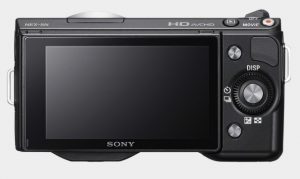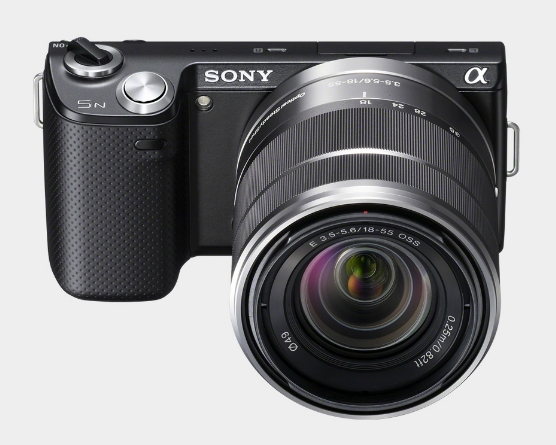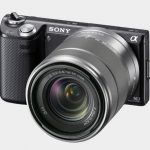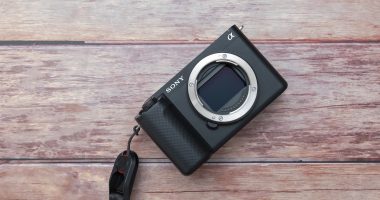If you read my initial impressions of the NEX-5N, then you know that I was very impressed with the overall build quality and feel of the NEX-5N. This was judged solely on my first impressions of the camera upon holding it and seeing it in person for the very first time and really being able to examine the build quality. Well, it’s been a good solid 3 weeks that I’ve had the camera now and have been able to shoot daily with it in a variety of different instances and situations. I’ve been able to examine how the camera functions in day-to-day usage as well as image quality. Has real world usage changed my feelings on the camera? Read more and find out.
Just to make things clear, I’ll be writing most of this review for the average person out there who doesn’t really know the technical aspects of photography and camera usage. I’m not what you call a professional photographer, though I probably know more than most people. I’m more of a hobbiest / enthusiast. If you’re looking for real technical information on the camera, I highly suggest that you check out DPreview’s indepth coverage of the Sony NEX-5N which you can find here. It’s one of the main reasons I decided to go with the NEX-5N and not a traditional DSLR like the Nikon D5100 or the Canon T3i. I know my way around a DSLR and I’ve been using old school film SLR’s since high school so difficulty of use wasn’t a factor in my decision. The main issue for me really was bulk. I love DSLR cameras and what they can do, but on a day to day bases, I really don’t want to be lugging one around with me all the time.
Buttons
 You’ll notice that the NEX-5N lacks a lot of the physical buttons and dials that many of its competitors have. The NEX-5N only has 9 buttons, not counting the on/off switch or the shutter release. Only 3 of those buttons are customizable and can be assigned to numerous functions. Two of the buttons you can only assign to 1 function but the third “soft” button as it’s called you can assign to either a single function or if you set it to “custom” mode, you can change this button to bring up a menu in which you can assign 5 custom settings to it. I set it to “custom” so that I wouldn’t have to go digging through the regular menu system for items I would normally use all the time.
You’ll notice that the NEX-5N lacks a lot of the physical buttons and dials that many of its competitors have. The NEX-5N only has 9 buttons, not counting the on/off switch or the shutter release. Only 3 of those buttons are customizable and can be assigned to numerous functions. Two of the buttons you can only assign to 1 function but the third “soft” button as it’s called you can assign to either a single function or if you set it to “custom” mode, you can change this button to bring up a menu in which you can assign 5 custom settings to it. I set it to “custom” so that I wouldn’t have to go digging through the regular menu system for items I would normally use all the time.
For the custom buttons, I suggest setting one of them to toggle the Auto Focus settings so that you can easily switch between auto focus and manual focus as there is no button for that like you would find on most DSLRs. I also suggest assigning another button for Shoot Mode in order to skip a step in the menu and access the different shooting modes faster although it’s not necessary to do so if you don’t mind the extra step. You’ll probably also want to setup the last button as Custom so you can add and extra 5 shortcuts to this button.
That brings me to the menu system. Many of the reviews find that it is a bit confusing to use but in my opinion, once you go through it a couple of time and figure out where everything is, it’s really not that hard to figure out. In fact, if you set up some of these items to your custom buttons, you may not even need to use the menu system anymore.  There are 6 main items in the menu – Shoot Mode, Camera, Image Size, Brightness/Color, Playback, and Setup.  Shoot Mode, Image Size, Playback, and Setup are pretty self explanatory as those are modes that most digital cameras already have. You’ll want to play around with the Camera and Brightness/Color menus the most since this is where most of the more advanced settings are located. Like I said above though, a few of these settings in these menus, you’ll be able to assign to one of the custom buttons to make your life a bit simpler.
The Sony NEX-5N as stated above has a touchscreen. This helps a bit with accessing certain settings and features but you’ll actually find that if you have the camera set up a certain way, you’ll rarely even need to access the touchscreen. Most of the features can be accessed using the rear buttons and the jog dial.
Articulating Screen
 On the subject of the screen, what I really like about it is that it is an articulating touchscreen. You can either tilt it up almost 90 degrees or tilt it down about 45 degrees. This is great for when you are trying to take images either really low or really high. The screen is also very solid and the mechanism used for the tilting seems very strong and tight, unlike some of the other articulating screens I’ve seen from other manufacturers. You’ll also notice that there is no optical viewfinder or even a electronic viewfinder on the NEX-5N. You’ll be shooting primarily by looking at the touchscreen. I was a bit worried about that as I grew accustomed using the optical viewfinder on the Nikon D5000 that I had for a week but in all honesty, I don’t miss not having one. It’s easy to compose images with the screen although focusing isn’t quite as fast as it would be on a regular DSLR. If you do want a viewfinder, you can opt for Sony’s EVF which is an optional add on and I hear its quite excellent although I haven’t had the pleasure of seeing on in person yet.
On the subject of the screen, what I really like about it is that it is an articulating touchscreen. You can either tilt it up almost 90 degrees or tilt it down about 45 degrees. This is great for when you are trying to take images either really low or really high. The screen is also very solid and the mechanism used for the tilting seems very strong and tight, unlike some of the other articulating screens I’ve seen from other manufacturers. You’ll also notice that there is no optical viewfinder or even a electronic viewfinder on the NEX-5N. You’ll be shooting primarily by looking at the touchscreen. I was a bit worried about that as I grew accustomed using the optical viewfinder on the Nikon D5000 that I had for a week but in all honesty, I don’t miss not having one. It’s easy to compose images with the screen although focusing isn’t quite as fast as it would be on a regular DSLR. If you do want a viewfinder, you can opt for Sony’s EVF which is an optional add on and I hear its quite excellent although I haven’t had the pleasure of seeing on in person yet.
Focusing
Here’s one area that is a bit of a weak spot for the NEX-5N. In bright day light and or situations with plenty of light, focusing is pretty fast. It may not always focus on what you want it to focus on, but you can compensate for that by activating face detection if you are shooting people or use object tracking if you are trying to focus on a specific thing. You can even manually adjust the focus after it has autofocused on something if you want to fine tune the focusing a bit. It’s not as speedy as say when you’re using a DSRL with the optical viewfinder, but for the average user, I think its quick enough.
When we get into dim light situations, that’s where the NEX-5N can stutter a bit. Sometimes it takes a while to lock onto something to focus on, even with the AF-assist light. Because of that, I recommend switching into manual focusing mode and enabling Sony’s excellent focus-peaking system. With focus-peaking, while manually focus on an object, a highlighted outline will appear around the object that you are focused on. Basically if you are focused on it, it’ll show up in red. This makes it real easy to manually focus using the viewscreen. You can even enable MF-assist zoom which will zoom into the scene on your viewfinder so you can fine tune your focus even more. This method however takes a bit more time to focus on your subjects.
I’ve had some trouble focusing on subjects in low light using the autofocus, but that’s why I always just shoot more than I need just in case. Once you get the hang of using the camera, you’ll find that there are ways around it’s focusing limitations.
Battery
As I explained in my first impressions post, battery charging is a painfully long wait. I’ve had lots of digital cameras and for some odd reason, this battery seems to take forever to fully charge. It feels like roughly around 4 hours I have to wait for it to fully charge. Maybe it’s just the anticipation of wanting to shoot more photos but this is definitely a good reason why you should probably pick up a second battery for the NEX-5N. This way, you charge up one battery while using the other and then swap them out with little to no downtime. I will say though that battery life in general is pretty good. I was worried a bit about that since I’ve read that others were having issues with that, but for me, I averaged about 600+ shots at full resolution on 1 charge. This however could also be due to the fact that I don’t use the flash at all. Overall though, I’m very happy with the batter life on the NEX-5N and haven’t had the need to carry around a second battery yet.
Scene Modes and Creative Style
Sony added some really fun modes to the NEX-5N that casual users may enjoy shooting with. These are labeled under “Creative Style.” There are modes like Toy Camera, Miniature Mode, Retro, High Contrast B&W, and Partial Color. These modes add a bit of fun to your photos without you having to do most of the work during post editing. Aside from the creative styles, there are also a bunch of preconfigured scene modes you can take advantage of for certain situations. There are scene modes for sports, night time photography, landscapes, macro, and portraits just to name a few. If you don’t want to deal with choosing which mode to use, you can set the camera to iAuto and it’ll automatically choose the what it thinks is the right scene mode for the occasion. This makes the NEX-5N very accessible to casual shooters and beginners. That doesn’t mean that the more experienced won’t like the camera as it comes with full manual settings for those who want full control over their shots.
Image Quality
Now here is really the main reason why I purchased a Sony NEX-5N, the image quality. I mean when it comes down to it, what you really want your camera to do is take really good photos and that’s what the NEX-5N does. Colors are bright and vivid and most of the photos I’ve taken so far contain very little noise. Daytime photos are fantastic as well as low light photos. You can view a few test shots I took over the weekend on my Flickr page here. I’m still tweaking a few of the settings here and there but for the most part, I couldn’t be more pleased with the image quality. Again, I’m no professional so I could really care less about the quality of the image a pixel level, but for print usage and image sharing on websites, the quality is more than acceptable to me.
E-Mount Lenses
 I like the e-mount lenses. They are well made and have a really good feel to them. I like that most of them feature an all metal outer shell which really gives them a feeling of quality. The focusing ring is very smooth as is the zoom ring. I like the fact too that Sony included a lens hood with the kit as well although I do wish they would have also included a lens cap for the back of the lens and a cap for the camera body itself.
I like the e-mount lenses. They are well made and have a really good feel to them. I like that most of them feature an all metal outer shell which really gives them a feeling of quality. The focusing ring is very smooth as is the zoom ring. I like the fact too that Sony included a lens hood with the kit as well although I do wish they would have also included a lens cap for the back of the lens and a cap for the camera body itself.
Here’s one area that most people complain about with the NEX series cameras so far, and that is their lack of available lenses. The NEX-5N comes with a 18-55mm f/3.5-5.6 kit lens to start off with. If you want additional lenses from Sony, you’ll be sad to see that there are only a handful available at the moment in e-mount configuration. That is not a lot at all and those wanting to expand their lens collection might be a bit disappointed with the selection. However, there is hope. There are some 3rd party lenses out right now and there will be more available soon. Sony has also stated that they will be releasing more lenses later this year and in 2013.
If you still can’t wait, there are tons of e-mount adapters available now that allow you to use lenses from Nikon, Canon, Sony’s Alpha mount lenses, and others.
Conclusion
 Before I bought this camera, I went through some major research first. I was 80% sure I was going to buy a DSLR like the Nikon D5100 or Canon T3i. That was until I saw the NEX-5N in person. I was really impressed with the size of it, the build quality, and just the overall way that the camera looked. I did tons of research on the camera and was also really impressed with the image quality and the overall feature set of the camera.
Before I bought this camera, I went through some major research first. I was 80% sure I was going to buy a DSLR like the Nikon D5100 or Canon T3i. That was until I saw the NEX-5N in person. I was really impressed with the size of it, the build quality, and just the overall way that the camera looked. I did tons of research on the camera and was also really impressed with the image quality and the overall feature set of the camera.
I however wasn’t too sure about not having an optical viewfinder, built in flash, or the weak battery as some claimed. I am glad that however that I as able to overlook those faults as this really is a great camera. I don’t miss not using an optical viewfinder and I know that if I ever did want one, I could go with Sony’s excellent Electronic Viewfinder that is available for the NEX-5N. The flash I never really use anyways, so it’s not a big deal, and the weak battery is highly over exaggerated by many out there as I am quite happy with how many shots I can take on a single charge. The slow focusing in low light situations too might be a bummer for some, but there are workarounds for that too.
The Sony NEX-5N is a great camera for those coming off a point-and-shoot system or even those who have DSLRs and want something a bit smaller that can still take very advanced shots. The price of the camera isn’t too bad either at $699 with the kit lens. It is on the higher end of the mid-range mirrorless camera category, but you’ll find a lot of bells and whistles with that price.
If you want to take a look at some sample shots I took with the Sony NEX-5N, shoot on over to my Flickr set here.










